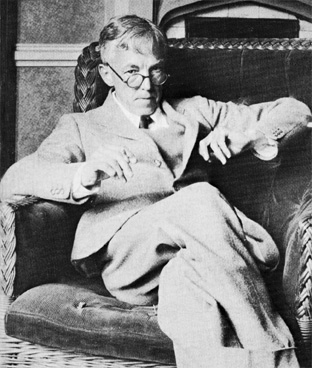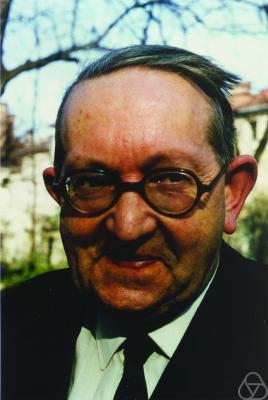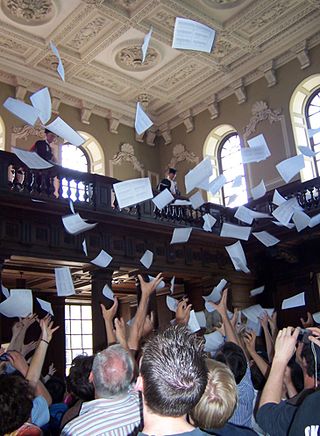
Srinivasa Ramanujan was an Indian mathematician. Though he had almost no formal training in pure mathematics, he made substantial contributions to mathematical analysis, number theory, infinite series, and continued fractions, including solutions to mathematical problems then considered unsolvable.

Godfrey Harold Hardy was an English mathematician, known for his achievements in number theory and mathematical analysis. In biology, he is known for the Hardy–Weinberg principle, a basic principle of population genetics.

John Edensor Littlewood was a British mathematician. He worked on topics relating to analysis, number theory, and differential equations and had lengthy collaborations with G. H. Hardy, Srinivasa Ramanujan and Mary Cartwright.
In complex analysis, the Hardy spacesHp are certain spaces of holomorphic functions on the unit disk or upper half plane. They were introduced by Frigyes Riesz, who named them after G. H. Hardy, because of the paper. In real analysis Hardy spaces are certain spaces of distributions on the real line, which are boundary values of the holomorphic functions of the complex Hardy spaces, and are related to the Lp spaces of functional analysis. For 1 ≤ p < ∞ these real Hardy spaces Hp are certain subsets of Lp, while for p < 1 the Lp spaces have some undesirable properties, and the Hardy spaces are much better behaved.

The London Mathematical Society (LMS) is one of the United Kingdom's learned societies for mathematics (the others being the Royal Statistical Society, the Institute of Mathematics and its Applications, the Edinburgh Mathematical Society and the Operational Research Society.

Harold Davenport FRS was an English mathematician, known for his extensive work in number theory.

Ernest William Barnes was a British mathematician and scientist who later became a liberal theologian and bishop.
Sir Arthur Lyon Bowley, FBA was an English statistician and economist who worked on economic statistics and pioneered the use of sampling techniques in social surveys.

Framlingham College is a public school in the town of Framlingham, near Woodbridge, Suffolk, England. Together with its preparatory school and nursery at Brandeston Hall, it serves pupils from 3 to 18 years of age.

The Mathematical Tripos is the mathematics course that is taught in the Faculty of Mathematics at the University of Cambridge. It is the oldest Tripos examined at the university.

The Mathematical Association is a professional society concerned with mathematics education in the UK.
Raymond Edward Alan Christopher Paley was an English mathematician who made significant contributions to mathematical analysis before dying young in a skiing accident.

Sir Harrie Stewart Wilson Massey was an Australian mathematical physicist who worked primarily in the fields of atomic and atmospheric physics.
St. Thomas' College is a government primary and secondary school for boys in Matara, Sri Lanka. The college was initially founded in 1844 as a private Anglican school by Rev. Fr. N. J. Ondatjee, a missionary of the Christian Missionary Society of England, in Wellamadama, Dondra. It presently has over 4,000 enrolled students studying primary to secondary education.
In mathematics, the Hardy–Littlewood maximal operatorM is a significant non-linear operator used in real analysis and harmonic analysis.
Blanche Descartes was a collaborative pseudonym used by the English mathematicians R. Leonard Brooks, Arthur Harold Stone, Cedric Smith, and W. T. Tutte. The four mathematicians met in 1935 as undergraduate students at Trinity College, Cambridge, where they joined the Trinity Mathematical Society and began meeting together to work on mathematical problems.











